 Most viewed Most viewed |

Castle wall with openings for weapons.7 views
|
|
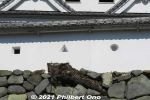
Castle tower had a tree growing in the foundation.7 views
|
|
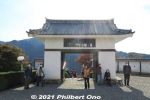
Main gate to the castle's main tower.7 views
|
|
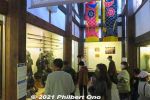
Inside Gujo-Hachiman Castle's main tower, a museum exhibiting local historical artifacts. This is the first floor. In the background, you can see Koinobori carp streamers made by local artists.7 views
|
|
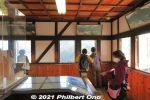
Top floor of the castle tower is a lookout deck with open windows (no glass). Very breezy.7 views
|
|
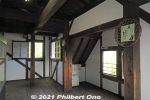
Lower floor in the castle tower.7 views
|
|
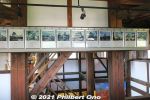
Photo gallery of other castles.7 views
|
|

7 views
|
|
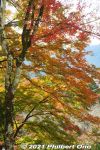
7 views
|
|
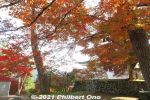
7 views
|
|

7 views
|
|
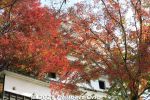
7 views
|
|

It was kind of tiring to climb up the mountain for the second on the same day to see the evening light-up. But it was worth it. Took 20 min. to take some quick photos before going back down to catch the bus back to Gifu Station.7 views
|
|
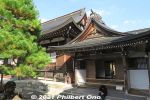
Tessoen Garden admission is ¥500 as of autumn 2021.7 views
|
|

7 views
|
|
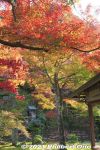
7 views
|
|

Jion-zenji worships Yakushi, the healing Buddha. 薬師7 views
|
|
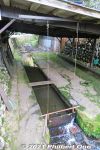
7 views
|
|
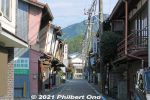
7 views
|
|
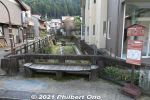
7 views
|
|
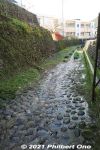
Otohime Stream7 views
|
|
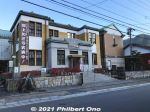
Hakurankan is Gujo-Hachiman's main museum exhibiting local culture, history, crafts, and ecology. Building was built in 1920 as a tax office. 7 viewsOpen: 9:00 am–5:00 pm, closed Dec 24 to Jan 2. Small admission charged
https://hakurankan.com/group_en/
|
|
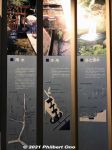
Traditional uses of water in Gujo-Hachiman.7 views
|
|
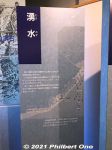
About Gujo's natural springs.7 views
|
|
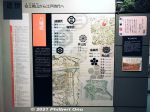
Gujo-Hachiman during the Azuchi-Momoyama and Edo Periods.7 views
|
|
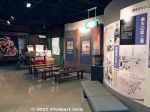
Kami-shibai show corner.7 views
|
|
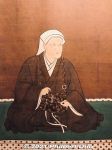
Portrait of Chiyo, wife of Yamauchi Kazutoyo.7 views
|
|
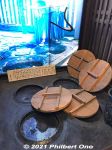
Indigo dye7 views
|
|
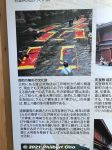
7 views
|
|
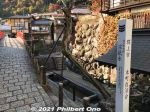
On the right is Sogi natural spring, named after poet Sogi who bid farewell here to the castle lord after visiting Gujo in the 15th century.7 views
|
|
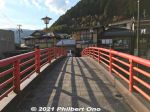
7 views
|
|

7 views
|
|
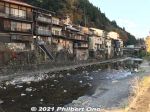
7 views
|
|
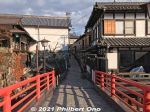
7 views
|
|
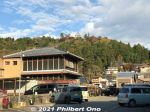
Gujo-Hachiman Castle seen from the street.7 views
|
|
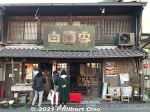
Sake shop in a traditional building in a neighborhood called Kajiya-machi7 views
|
|
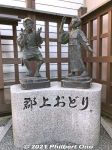
Gujo Odori monument.7 views
|
|
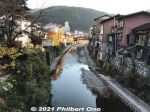
Kodara River looking downstream.7 views
|
|
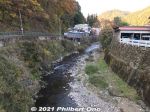
Kodara River upstream.7 views
|
|
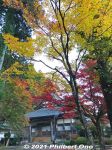
Daijoji Temple in autumn. 大乗寺7 views
|
|
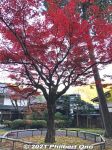
Daijoji Temple in autumn. 大乗寺7 views
|
|
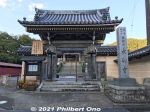
Gate to Chokyoji Temple. 長敬寺7 views
|
|
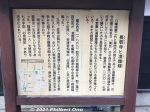
Chokyoji has a connection with the Ryosotai Battalion formed by former samurai of Gujo domain. They fought against Imperial forces in 1868 at Aizu Wakamatsu. 凌霜隊7 views
|
|
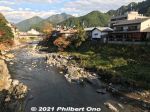
Yoshida River in Gujo-Hachiman looking upstream. There are also cherry blossoms in spring.7 views
|
|
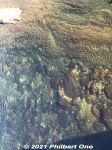
Yoshida River's clear and clean water.7 views
|
|
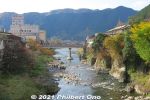
Looking downstream on Yoshida River. Miyagase Bridge can be seen.7 views
|
|
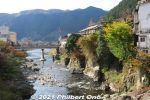
Looking downstream on Yoshida River from Shinbashi Bridge.7 views
|
|
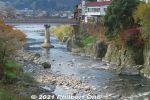
7 views
|
|
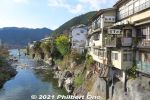
Looking downstream on Yoshida River from Shinbashi Bridge.7 views
|
|
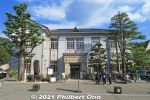
Former Hachiman Town Hall was built in 1936 and served as the Hachiman Town Hall until 1994. It now houses a tourist information center, souvenir shop, and restaurant. 郡上八幡旧庁舎記念館7 viewsThe large plaza in front of the building is one of the main venues for the Gujo Odori Dance held in summer.
|
|
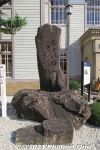
In front of the former Hachiman Town Hall is this monument marking the origin of the Gujo Odori Dance.7 views
|
|
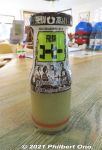
Hida Coffee, locally produced coffee milk.7 views
|
|

Cafe menu. Reasonable prices.7 views
|
|
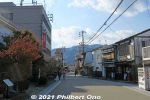
Gujo-Hachiman Post Office on the left.7 views
|
|
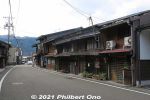
Traditional-looking homes.7 views
|
|
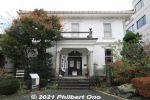
Former Hayashi Clinic. It was closed when I visited.7 views
|
|
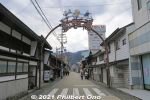
Shinmachi-dori street is the main street in the southern part of town south of Yoshida River.7 views
|
|
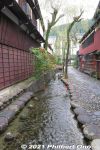
Gujo-Hachiman has a few traditional townscape streets. This is Yanaka Mizu no Komichi (やなか水のこみち). Narrow alley with embedded stones.7 views
|
|
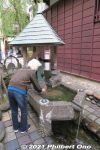
7 views
|
|
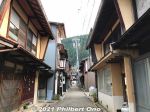
7 views
|
|
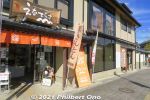
JR Ena Station has a tourist information center right inside and outside.7 views
|
|
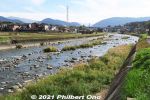
Agi River.7 views
|
|
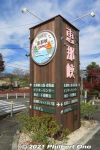
Finally, the Enakyo sign.7 views
|
|
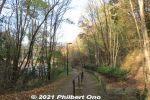
From the bus stop, there's a short path down to the riverside.7 views
|
|

Map of Enakyo. There's a sightseeing boat pier on the left, a few hotels, and a small spit of land that is Sazanami Park, one main attraction.7 views
|
|
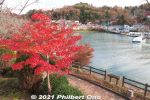
Left side of Sazanami Park facing the boat pier.7 views
|
|
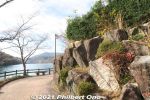
Approaching the tip of Sazanami Park.7 views
|
|
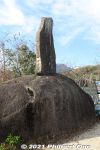
Tanka poem monument for poet Kitahara Hakushu.7 views
|
|
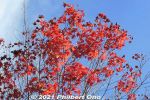
7 views
|
|

Benten Island is the tip of a mountain now submerged by the dammed river.7 views
|
|
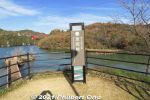
Lookout point on Sazanami Park.7 views
|
|
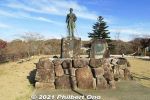
Momosuke Square at the top of Sazanami Park. Statue of Fukuzawa Momosuke, son-in-law of Fukuzawa Yukichi. Momosuke built the Oi Dam that created this Enakyo reservoir and hydroelectric power.7 views
|
|
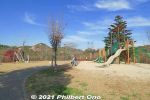
Also a playground for kids.7 views
|
|
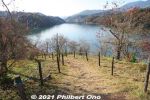
7 views
|
|
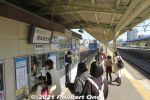
Tarumi Line starts here at JR Ogaki Station on the JR Tokaido Line. You can buy Tarumi Line tickets on the platform when transferring from a JR train.7 views
|
|

Tarumi Line starts here at JR Ogaki Station. Only one train car on this rural line.7 views
|
|
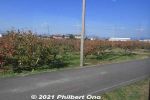
From the train, you see a lot of persimmon groves. This area of Gifu (Mizuho, Motosu, Ibigawa, etc.) is where the fuyu-gaki variety of persimmons (富有柿) originated in the late 19th century.7 viewsNow grown all over western Japan. Gifu Prefecture is Japan's second largest producer of fuyu-gaki persimmons after Nara Prefecture. If you walk around these neighborhoods, you might see persimmons for sale for cheap in front of a house.
Unfortunately, a few of these farmers are seeing thieves stealing their fruit. They will likely install more security cameras.
|
|

This Somon Gate (総門) marks the start of the path leading to Tanigumi-san. The shuttle bus stop is slightly beyond this gate.7 views
|
|
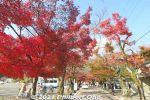
As soon as you get off the shuttle bus and see the path to the temple, you see these maple leaves.7 views
|
|
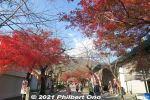
7 views
|
|
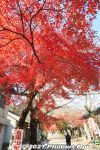
7 views
|
|
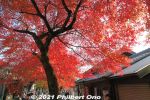
7 views
|
|
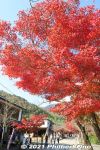
7 views
|
|
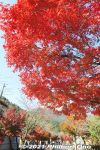
7 views
|
|
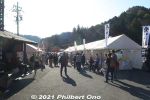
During autumn, a local event selling local food. This is in the parking lot behind the Ibigawa Tourist Information Plaza.7 views
|
|

Public restroom in a tradtional-style building.7 views
|
|
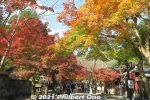
7 views
|
|
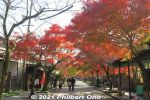
7 views
|
|

7 views
|
|
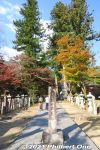
Stone marker for the 33rd and last temple on the Saigoku Kannon Pilgrimage temple in western Japan (西国三十三所).7 views
|
|
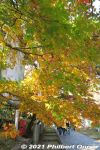
7 views
|
|
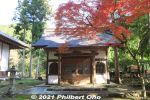
Juodo Hall is a small worhsip hall (closed) on the way to Kegonji. 十王堂7 views
|
|
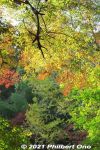
7 views
|
|
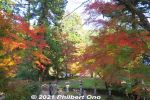
7 views
|
|
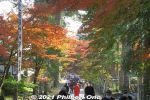
7 views
|
|
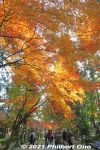
7 views
|
|
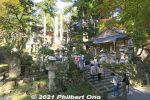
Hall that keeps 33 Kannon statues. Not open to the public. 三十三所堂7 views
|
|
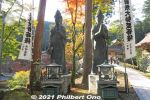
7 views
|
|
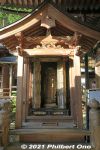
7 views
|
|
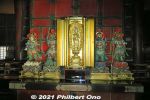
Statues at the back of the main hall.7 views
|
|
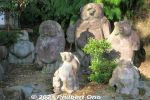
Tanuki7 views
|
|
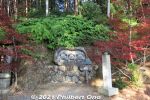
7 views
|
|

7 views
|
|
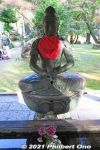
7 views
|
|
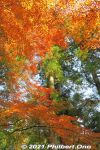
7 views
|
|
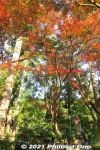
7 views
|
|
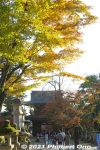
Niomon Gate7 views
|
|

Niomon Gate7 views
|
|
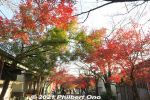
7 views
|
|

Shuttle bus back to the train station.7 views
|
|

End of Ibigawa Line at Ibi Station.7 views
|
|

At Kita-Godo Station, these plastic seats look like they are from 1980s shinkansen stations.7 views
|
|
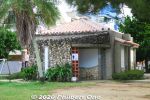
Okinawan-style restrooms at Naminoue Beach.7 views
|
|
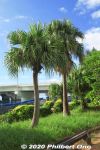
Naminoue Beach Park.7 views
|
|

Anatomy of Ryuchu dragon pillars.7 views
|
|
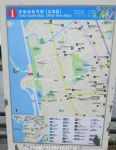
Map of Naminoue and Tomari areas.7 views
|
|
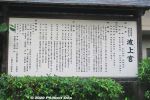
About Naminoue Shrine.7 views
|
|
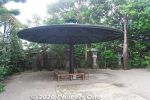
7 views
|
|
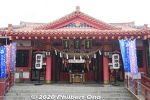
Near Naha's beach, Naminoue Shrine (波上宮). Major Shinto shrine in Naha. Looks very Okinawan. http://naminouegu.jp/english.html7 views
|
|
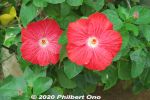
Hibiscus7 views
|
|

Commodore Perry Landing Monument is in the distance. The cemetery has locked gates so we can't enter it. Not really a tourist attraction, but it can be clearly viewed from outside the low fence.7 views
|
|
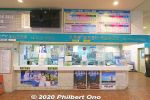
At Tomari Port, ticket window for Kumejima island.7 views
|
|
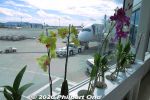
7 views
|
|

Yui Rail Naha Airport Station turnstile.7 views
|
|
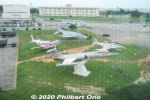
Japan's Air Self-Defense Force base is also at Naha Airport.7 views
|
|
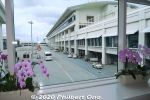
Orchids on the concourse to the gates at Naha Airport.7 views
|
|

We flew on a Japan Transocean Air (JTA) Boeing 737-800 to Ishigaki, Yaeyama's main island. JTA is jointly owned by JAL (majority stake), Okinawa Prefecture, and others.7 views
|
|

Aircraft door.7 views
|
|

Pink whale shark Japan Transocean Air (JTA) Boeing 737-800 plane taking off from Naha Airport.7 views
|
|

Ryukyu Air Commuter DHC8-Q400CC (DH4) turboprop plane taking off from Naha Airport.7 views
|
|
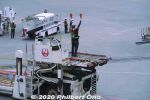
Ramp Marshall signaling a Japan Airlines Boeing 777-200 arriving at the gate at Naha.7 views
|
|
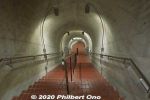
Steps down to Gyokusendo Cavern.7 views
|
|
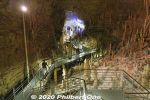
The main attraction of Okinawa World is Gyokusendo (玉泉洞), one of the largest limestone caverns in Japan. It's cooler in here (21˚C), so it's great in summer.7 viewsThis section is called Toyo Ichido. 東洋一洞
|
|
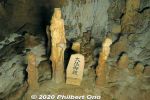
"Buddha statues"7 views
|
|
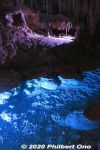
7 views
|
|
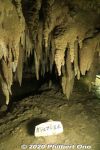
Banyan tree formation7 views
|
|
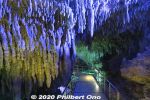
7 views
|
|

Japanese mitten crab, one of the creatures that live in the cavern. モクズガニ7 views
|
|
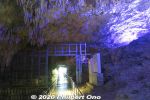
Nearing the cavern exit.7 views
|
|

7 views
|
|
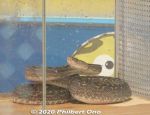
Habu ready to attack. If you see this pose, run away quick.7 views
|
|
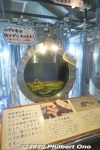
Brewing Habu liquor or habu-shu (ハブ酒) made with awamori or brandy.7 views
|
|
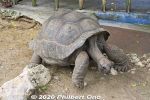
Old tortoise.7 views
|
|
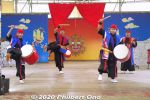
7 views
|
|
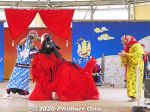
Okinawan shishi-mai lion drinking awamori.7 views
|
|
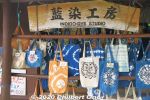
Indigo fabric goods.7 views
|
|

7 views
|
|

7 views
|
|
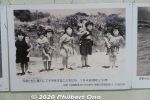
Okinawan children babysitting in the old days. It was a common sight on mainland Japan too.7 views
|
|
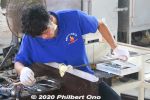
Ryukyu Glass Kingdom Studio7 views
|
|
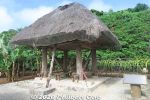
Tropical Orchard is what you see after exiting the Gyokusendo Cavern. 熱帯フルーツ園7 views
|
|
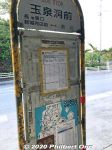
Gyokusendo-mae bus stop back to Naha. Buses are infrequent. Typical bus stop sign on Okinawa. Simple, metal panel with a grunge look. Must be like this to withstand frequent typhoons.7 views
|
|
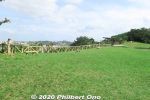
From Urasoe Castle, there's no trail going down the Hacksaw Ridge cliff.7 views
|
|
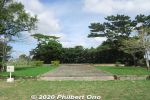
Former site of the Aikoku Chiso Memorial Monument erected here in 1965 in memory of people from Aichi Prefecture who died during the Battle of Okinawa. In 1994, the monument was moved to the Peace Memorial Park in Itoman.7 views
|
|
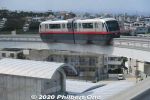
Yui Rail train near Urasoe-Maeda Station.7 views
|
|
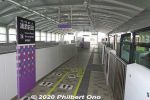
Yui Rail Urasoe-Maeda Station.7 views
|
|

View of Salmson 2A2's tail underneath. It's hollow. 乙式一型偵察機(サルムソン2A2)7 views
|
|

All the planes which first flew in Japan here in Kakamigahara.7 views
|
|

About the Kawasaki Ki-61 Hien fighter.7 views
|
|

Mitsubishi A6M1 Zero fighter prototype replica. 十二試艦上戦闘機(「零戦」試作機)(三菱A6M1) (1/1模型)7 views
|
|
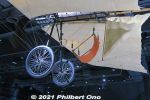
7 views
|
|
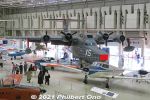
7 views
|
|
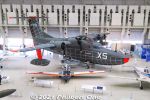
UF-XS Experimental Flying Boat based on Grumman UF-1 Albatross. UF-XS実験飛行艇7 views
|
|
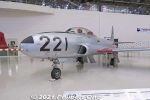
Lockheed T-33A7 views
|
|

Fuji T-1B7 views
|
|
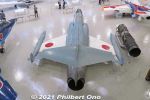
Mitsubishi-Lockheed F-104J Starfighter7 views
|
|
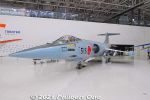
F-104J Starfighter7 views
|
|

Nose of Mitsubishi T-2 Blue Impulse aerobatic jet.7 views
|
|
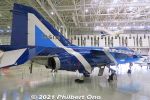
Mitsubishi T-2 Blue Impulse aerobatic jet.7 views
|
|
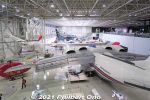
NAL Asuka STOL Research Aircraft7 views
|
|
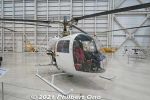
7 views
|
|
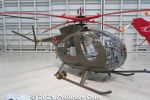
Kawasaki-Hughes OH-6J helicopter from 1974.7 views
|
|
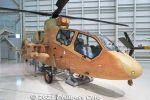
Kawasaki XOH-1 wooden mockup helicopter from the 1990s.7 views
|
|
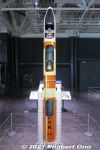
H-II two-stage rocket made with 100% Japanese technologies.7 views
|
|

Inside Japan's Kibo module (replica) for International Space Station (ISS). The module is used to conduct various experiments in space.7 views
|
|
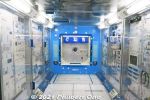
Inside Japan's Kibo module (replica) for International Space Station (ISS).7 views
|
|

Japanese astronauts from 1990 to present day.7 views
|
|

Japanese astronauts starting with Akiyama Toyohiro, the first Japanese national to go into space in Dec. 1990. He went to Russia's Mir space station via Soyuz rocket. His trip was sponsored by his company TBS where he was a TV journalist.7 views
|
|
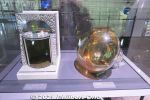
Scale model of the Super-Kamiokande and a photomultiplier tube that detects light from Cherenkov radiation. The Super-Kamiokande has 13,000 of these photomultiplier tubes.7 views
|
|

Section S5 is about space probes to learn more about the origin of space and life.7 views
|
|
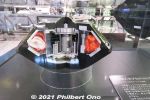
Cross section of Hayabusa II re-entry capsule. はやぶさ27 views
|
|

Improved aircraft technologies and materials have improved the plane's range and efficiency.7 views
|
|

Mieji Station on the Tarumi Line (Tarumi Railway). Unmanned station. 樽見鉄道樽見線 美江寺駅7 views
|
|
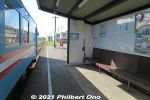
Mieji Station platform on the Tarumi Line.7 views
|
|
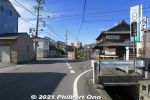
Intersection with a street map board.7 views
|
|
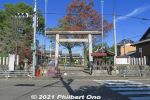
The first major sight in Mieji-juku is Mie Shrine and Mieji Kannon Temple. 美江神社7 views
|
|
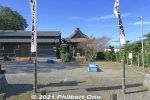
Next to Mie Shrine is Mieji Kanzeon-do Hall. 観世音堂7 views
|
|
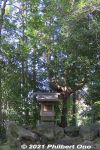
Akiba Shrine7 views
|
|
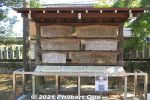
Also at Mie Shrine is this replica of Mieji-juku's Kosatsu official bulletin board. 高札7 views
|
|

Replica of Mieji-juku's Kosatsu official bulletin board. 高札7 views
|
|
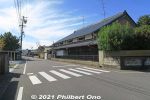
7 views
|
|
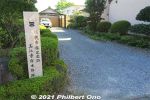
Site of Mieji-juku's Honjin (VIP lodging). 7 views
|
|
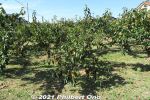
Mizuho is a major producer of Fuyu-gaki persimmons. 7 views
|
|
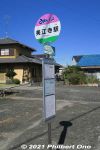
Bust stop at Mieji Station. Buses very infrequent.7 views
|
|
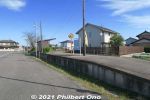
Back to Mieji Station.7 views
|
|

Onomichi Castle overlooking Onomichi Station. It was built in 1964 solely as a local museum and tourist attraction. 7 views
|
|
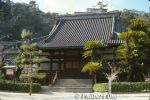
Tokkoji Temple near Onomichi Station. 持光寺 7 views
|
|

Sunset at Tivoli in Okayama. After the park closed, the site saw connstruction of Ario Kurashiki (Ito Yokado) shopping mall and Mitsui Outlet Park Kurashiki.7 views
|
|
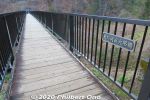
7 views
|
|
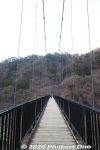
Great views of the river below. Nicknamed "Matchmaking Bridge."7 views
|
|
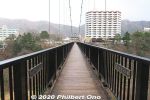
Walking back across Kinutateiwa Bridge over Kinugawa River.7 views
|
|
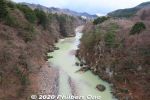
Kinugawa River as seen from Kinutateiwa Bridge.7 views
|
|
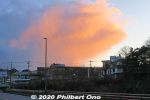
Sunset clouds in Kinugawa Onsen.7 views
|
|

Mitsu-ishi (三ツ石) rocks bound by a shimenawa sacred rope.7 views
|
|

Fishing boat sailing past Manazuru Peninsula.7 views
|
|

Niseko Hirafu has both easy and steep (moguls) slopes. ニセコ ヒラフ7 views
|
|

Views from Niseko Annupuri at close to sunset.7 views
|
|
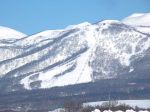
Niseko Moiwa was near our lodge. ニセコモイワ7 views
|
|

Bihoro Pass is within Akan-Mashu National Park. 7 views
|
|

7 views
|
|

View of Lake Mashu from Scenic Point 1.7 views
|
|

Mt. Io, meaning "Sulphur Mountain," is a lava dome spewing steam and sulphur gases. Tourists can walk and easily see the sulphur and steam vents. 7 views
|
|
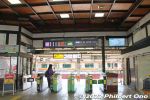
JR Takao Station. Takes a little over an hour from Tokyo Station on the JR Chuo Line.7 views
|
|

When I took the bus from Takao Station in mid-morning, it was packed even on a weekday during peak bloom.7 views
|
|
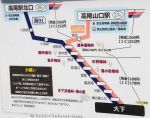
Bus stops between the two nearest train stations and Takao Baigo.7 views
|
|
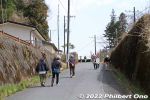
Walking to Kogesawa Bairin.7 views
|
|
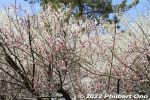
7 views
|
|
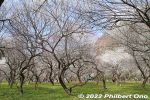
7 views
|
|
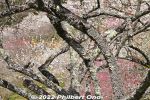
Plum trees also have lichens growing on the trunk and branches. These lichens form on plum trees in rural areas. We don't see them on plum trees in the city because exhaust fumes from vehicles kill them. 7 viewsSo if you see these lichens on plum trees, it means the surrounding environment is very clean. (Parmotrema tinctorum ウメノキゴケ)
|
|
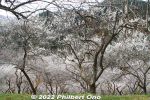
Looking down the hillside of white plum trees.7 views
|
|
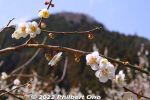
7 views
|
|
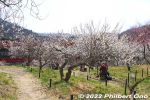
7 views
|
|
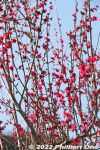
7 views
|
|
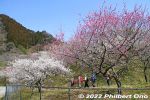
7 views
|
|
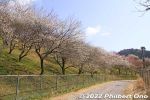
7 views
|
|
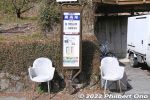
Bus stop7 views
|
|
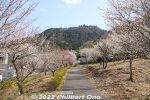
Surusashi Bairin7 views
|
|
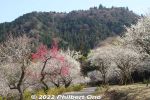
Other end of Surusashi Bairin.7 views
|
|
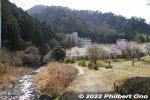
A grove named Takao Ume-no-Sato Machi-no-Hiroba. 7 views
|
|
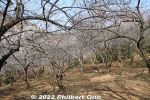
7 views
|
|
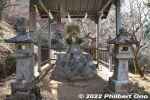
People in this Takao area have been worshipping Tenjin for centuries. Most all Tenmangu/Tenjin shrines (thousands of them) have plum blossoms.7 views
|
|
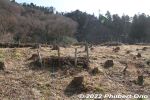
7 views
|
|
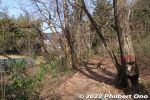
Walking path along the river.7 views
|
|
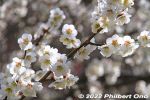
7 views
|
|
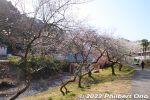
7 views
|
|

Lake Kussharo is another scenic lake in Akan-Mashu National Park in eastern Hokkaido. Japan's largest caldera lake. Unlike Lake Mashu, Kussharo is accessible to tourists like here at Sunayu.7 views
|
|

Boating on Lake Kussharo, Hokkaido.7 views
|
|

The lake circumerence is 57 km. Deepest point is 125 meters. In the middle of the lake is Nakajima island, a volcano. Japan's largest island in a lake. The island is uninhabited by humans.7 views
|
|

7 views
|
|
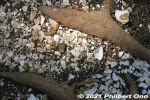
While walking through Horinouchi Kaizuka Shell Mound, many pieces of shell or pottery on the ground. Still here, after thousands of years!7 viewsRead more about this shell mound here: https://ichikawashi.jp/horinouchi/index_en.html
|
|
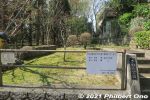
Sawara Park, we walked through here.7 views
|
|
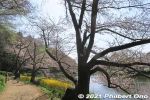
Some cherry blossoms along Junsai-ike Pond in late March. じゅん菜池7 views
|
|
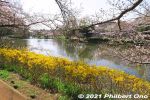
Cherry blossoms along Junsai-ike Pond.7 views
|
|
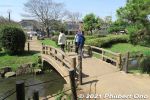
Small bridge in the middle of Junsai-ike Pond.7 views
|
|
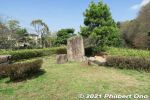
Small island in the middle of the pond.7 views
|
|
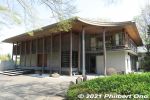
Ekoin Betsuin Temple's main hall rebuilt in 2009. There's actually a cafe (Cafe Terrace Ekoin) on the 2nd floor. It belongs to the Jodo-shu Buddhist sect and is a branch of Ekoin Temple in Ryogoku, Tokyo. 回向院市川別院源光寺7 views
|
|
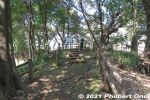
Satomi Park also has the Akedo Kofun burial mound complete with two stone coffins exposed on the mound. 明戸古墳石棺7 views
|
|
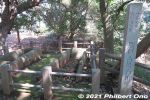
Two stone coffins on Akedo Kofun burial mound. Experts believe that they contained the remains of local nobility who ruled this area in the 6th to 7th century. Chiba Prefecture has many of these stone coffins. 明戸古墳石棺7 views
|
|
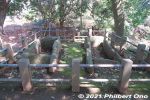
The Akedo Kofun burial mound stone coffins date from the 6th century. They were discovered in 1479. The dirt mound over the coffins fell away to expose the coffins which contained samurai armor, swords, etc. 明戸古墳石棺7 views
|
|
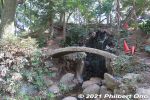
Satomi Park7 views
|
|
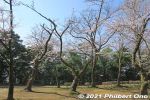
Cherry blossoms in Satomi Park. 7 views
|
|
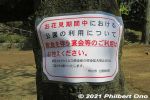
Sign on a cherry tree saying that no hanami flower-viewing picnics are not allowed here due to Covid-19.7 views
|
|
| 71464 files on 284 page(s) |
 |
 |
280 |  |
 |
|